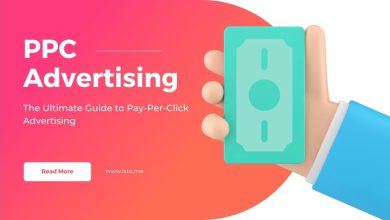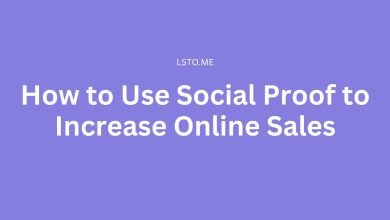
Email marketing can be a powerful tool to help generate leads, build customer relationships and increase sales. If done correctly it can yield amazing ROI. To ensure your email campaigns are successful, we have compiled a list of the top 10 tips for successful email marketing. These tips will help you understand what makes an effective email campaign and how to create one that maximizes results.
1. Have a clear and specific call to action.
Email marketing is an effective way to reach a large audience and promote your product or service. To make the most out of this strategy, it’s important to have a clear and specific call to action in your emails. When done correctly, this can help drive leads, conversions, and sales for your business.
Including a compelling call to action in your email content encourages readers to take the next step on their own accord. Whether you want them to “Sign Up Now” or “Buy Now”, make sure that you direct them where they should go with a language that stands out clearly from the rest of the message. The best calls to action are short so that readers can easily understand what it is you want them to do.
2. Segment your email list to target specific groups.
To maximize success, businesses must segment their email list into targeted groups that appeal to different audiences.
Segmenting an email list allows businesses to send more relevant messages that align with customer wants and needs. Subscribers can be grouped according to their past behaviors such as purchase history or interests which allows for a more personalized approach. This can result in higher open rates, click-throughs, and leads generated from your email campaigns. Additionally, segmentation helps businesses save time by not having to create separate campaigns for each group of subscribers.
By breaking down an email list into smaller segments, businesses can better target specific audiences which in turn improves engagement and increases conversions.
3. Personalize the subject line and email content.
When it comes to email marketing, personalization is key. Crafting the perfect subject line and content for each email can help your message stand out from the competition.
It’s important to consider who your audience is when writing an effective email campaign. It’s helpful to segment customers into different categories and personalize content for each group. This can include simple tactics like addressing the reader by name or providing relevant information that speaks directly to their interests. Having a clear understanding of your target demographic can help you create messages that resonate with them on a deeper level.
Additionally, utilizing data-driven insights can further improve the effectiveness of personalized emails. By tracking user behavior such as website visits or product purchases, you can better understand what type of content will be most effective in connecting with customers and encouraging them to take action.
4. Test and optimize subject lines, email content, and send times.
Testing and optimizing subject lines, email content, and send times are essential elements of effective email marketing.
Testing subject lines is a great way to determine what resonates with readers. Try different approaches such as including numbers, personalizing emails with the recipient’s name or location, or using action-oriented language that encourages recipients to click through to learn more about your product or service. Additionally, testing out different types of content can help you discover what resonates most with customers – whether it’s promotional offers or educational content like tutorials or tips related to your field.
5. Use a clear and recognizable sender name and email address.
It’s important to ensure that the sender name and email address used are both clear and recognizable. This helps build trust with your audience and encourages them to open the emails you send.
An identifiable sender name allows recipients of your emails to easily recognize who is sending them. It also helps establish a sense of credibility for your brand. You can choose something simple like “Your Company Name” or you could opt for a more personal approach, such as “John from Your Company Name”. Whichever option you go for, make sure it stands out from other emails in the inbox.
The same goes for email addresses – make sure they contain information about who the email is coming from or their website URL. Avoid using generic email addresses like info@… or sales@.
6. Keep your email design simple and mobile-friendly.
It’s important to keep your design simple and mobile-friendly. With the rise of smartphones and tablets, most people are now reading emails on their phones instead of PCs or laptops. Therefore, when you create an email campaign, it’s critical to make sure that it looks great on any device so your readers can easily engage with your content.
To help ensure that your message stands out from the crowd, opt for fewer visuals in favor of clean typography and clear call-to-action buttons. Use white space around text elements to make them easier to read on mobile devices. Additionally, avoid using too many HTML or image-heavy formats as this can impact how quickly messages load or be blocked by spam filters.
7. Limit the use of images and use alt text for accessibility.
It is essential to use images in an appropriate and accessible way if you don’t want to miss out on potential clients. Limiting the use of images in emails, as well as using alternative text (alt-text) for accessibility, can help boost your email marketing efforts and make them much more successful.
Alt-text is a brief description of an image that allows people who might be visually impaired to understand what the image is showing. By including alt-text descriptions with each image in your emails, you are making sure that everyone can access your content easily and without any problems. This will also go a long way towards increasing customer engagement since it shows that you care about providing content that everyone can access without difficulty.
8. Keep the email content concise and to the point.
When it comes to email content, it is important to keep things concise and to the point. Lengthy emails can quickly become overwhelming for consumers, making them less likely to take action or click through.
For an effective email campaign, start by outlining what the main message of the email should be. Keep sentences short and use bullet points whenever possible. Additionally, make sure that readers have just one call-to-action at the end of each email – this will ensure that they are focused on one goal instead of being overwhelmed by too many options.
By keeping emails concise and clear with a single focus, marketers can maximize their chances of achieving their desired results from each campaign. When done right, shorter emails can help build trust with customers while increasing engagement rates over time.
9. Include an unsubscribe link and honor unsubscribe requests promptly.
With the current landscape of regulations surrounding email marketing, it’s important to ensure that you are maintaining best practices by including an unsubscribe link in each of your emails and honoring unsubscribe requests promptly.
The CAN-SPAM act of 2003 requires businesses sending commercial emails to include a visible and easy-to-find way for recipients to opt-out at any time. This requirement includes having an unsubscribe link in every email sent out, which should be made available regardless if the recipient subscribed through a website or not. It is also essential for businesses to honor these requests immediately; meaning that when someone clicks on the unsubscribe link they should no longer receive marketing emails from your business within 10 days after such a request has been received.
10. Measure and analyze your email marketing performance regularly.
To maximize the potential of email campaigns, it’s important to routinely measure and analyze performance metrics to stay on top of industry trends. Doing so can help marketers identify areas of improvement and opportunities for growth in their email marketing strategy.
The regular analysis allows businesses to track essential metrics such as open rates, click-through rates (CTR), unsubscribe rates, bounce rates, and conversion rates, which are all indicators of how successful an email campaign has been at engaging users. Comparing current metrics with past campaigns can provide valuable insights into which subject lines are working best for a particular audience or what type of content resonates with them most. Leveraging this data enables marketers to optimize their messages for maximum engagement and ROI.




